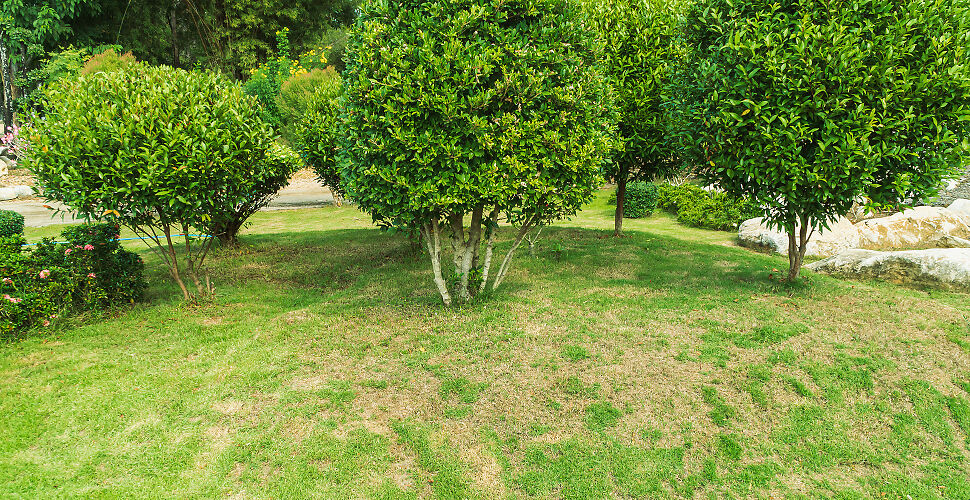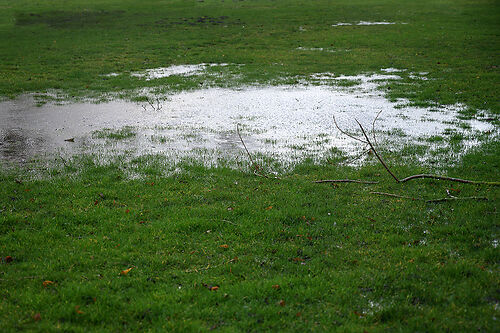
March 8th, 2023 by
There are a number of things that can damage your lawn and make it look less than pretty but a significant one, that will destroy it from underneath, is a pest infestation. Once one has taken hold, it’s very tricky to treat but the good news is that most are entirely preventable through normal care and maintenance. In this article, we explore why good maintenance deters lawn pests and the tasks you should be incorporating into your lawn care routines.
How does lawn maintenance prevent pests?
In very simple terms, good care and maintenance enable grass to grow strong and healthy. Healthy grass is more resistant to pests and disease because it’s stronger and more robust. It also has the added bonus of a lusher, greener appearance, being more hard-wearing, and creating thicker coverage. Looking after it, therefore, has no downsides apart from requiring a little bit of effort, which will be well rewarded.
How can you care for your lawn and how does that ward off pests?
The following tasks are all standard grass care activities that will help support grass health. Here’s what you should do, and why:
Mow regularly
That you have to cut the grass during the warmer months is news to nobody but other than keeping it at a manageable level, do you know the other benefits of mowing? Keeping grass shorter allows sunlight and rain to penetrate the roots and this in turn promotes stronger growth. It will, therefore, grow thicker giving more thorough coverage and being better able to inhibit weed growth thus reducing the number of places unwanted creepy crawlies like to live.
Take care not to over-mow though (which many people do thinking it will allow them longer between cuts) as cutting too short can weaken the grass, making it more vulnerable to pests. Aim for around 2.5-4cm high each time. On the basis that you should never remove more than a third of the length in a single mow, aim to cut again when it reaches approximately 4-6cm long.

Improve soil quality
Plants need three essential things to thrive: water, light, and soil. Improving the quality of the soil can make a huge difference to plant health as this is where it takes its nutrients and sustenance from. There are several ways you can do this. One is to add organic mulch to the soil. Perhaps a task that is easier to do in borders than a lawn, but you can cover the grass with such matter over the winter period when it’s dormant. Alternatively (or additionally) add nutrients to the soil by treating it with iron sulphate. This just adds iron to the soil, making it slightly more acidic, boosting grass health and allowing it to grow stronger and greener. This will also help to keep pests at bay too as they are less likely to lay eggs in acidic soil.
Reduce water levels
While water is essential for grass growth, too much will cause the grass to rot which can lead to things like disease, bacteria, and fungi developing. It also makes an ideal habitat for pests such as leatherheads (crane fly grubs). A waterlogged lawn is also practically unusable. If your lawn suffers from water retention, you will need to take measures to improve drainage.
Your best tool is to aerate the soil. This just means creating holes in the soil to allow water to drain away more effectively. You can buy aerators, which are spikes mounted on a cylinder that you roll over the surface of the grass, or you can just use a garden fork. You can even buy devices that strap onto the soles of your shoes and work as you walk over the lawn!
Improving the soil quality also has an additional benefit in that it encourages worm activity and these creatures (the ones you really do want in your soil) will do wonders for drainage and general soil health; tilling the soil, creating air pockets, and decomposing organic matter.

Weed frequently
Weeding is a necessary part of gardening but there’s a greater reason to keep on top of them than simply to make the lawn look nicer. Weeds tend to harbour the kinds of pests we’re trying to avoid, as well as aggressively competing with grassroots for nutrients. The good news is all of the measures already listed will help minimise weed growth, but they can’t prevent it entirely. Weed killers will also kill grass, plus it’s better to limit the use of chemicals in the garden as much as possible so a good old-fashioned wedding is the best strategy. Pull them up as regularly as you can to prevent them from becoming established and try to get the root as well, otherwise, they’ll grow back. Weed-pulling tools can help you do this and you can get ones with long handles that save your back too.
What not to do
Avoid using pesticides to treat the problem, because while this will certainly help to rid your lawn of unwanted pests, it will also rid your lawn of more desirable bugs that will actually help to protect your lawn.
Comments
Leave a reply
Your e-mail address will not be published. All fields are required


